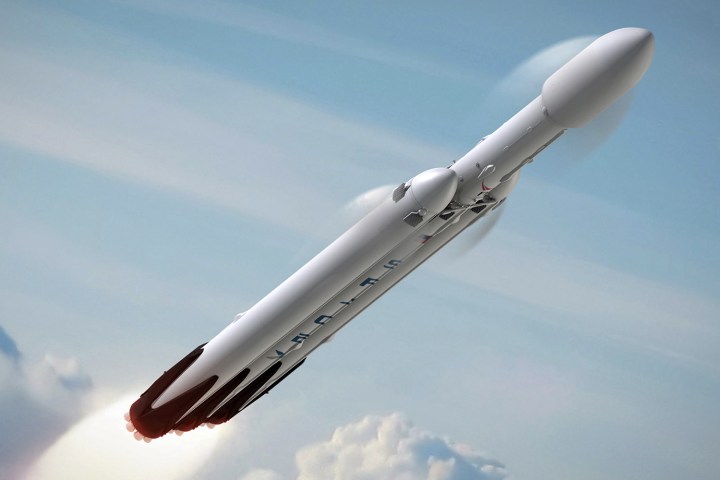
SpaceX, the private space company headed by Musk, touts the Falcon Heavy as “the most powerful operational rocket in the world by a factor of two.” So, yes, November’s launch is a big deal.
Over the weekend, the billionaire entrepreneur — who also has electric car and subterranean transportation projects on the go, among others — started to drum up excitement for the historic Falcon Heavy launch by posting an animation showing how the triple-barrel contraption might look when it fires up its engines.
Although widely reported as a new animation, it’s actually a shorter version of one published by SpaceX a while back. Musk posted the edited clip on Instagram over the weekend.
The animation shows the massive three-booster Falcon Heavy leaving the launchpad before various separation processes begin. It closes with two of the booster cores returning to Earth, landing pretty much alongside each other. The third lands a short while later. SpaceX’s system has been designed to enable the reuse of rockets to vastly reduce the cost of space travel.
Musk noted alongside his Instagram post that there’s much that can go wrong with the launch. The cautiousness is borne from experience, with the CEO’s team of engineers having suffered a slew of setbacks as it worked toward perfecting the launch and landing of its less powerful Falcon 9 rocket over the last few years.
Musk said recently that going from the single-core Falcon 9 to a triple-core vehicle has been “shockingly difficult,” but the company’s past achievements suggest that even if they don’t get the Heavy’s launch and landing right first time, the team will nail it before too long.
The “beast”
The 230-feet-tall (70 meters) Falcon Heavy is, by any standards, a beast. In fact, Musk has used that very word to describe the rocket.
“Its first stage is composed of three Falcon 9 nine-engine cores whose 27 Merlin engines together generate more than 5 million pounds of thrust at lift-off, equal to approximately eighteen 747 aircraft,” SpaceX says on its website.
While the Falcon 9 is designed for shorter missions, its big brother “restores the possibility of flying missions with crew to the moon or Mars,” SpaceX said.
Editors' Recommendations
- Watch SpaceX fire Starship’s Raptor engines ahead of 4th test flight
- Elon Musk throws some light on his very busy schedule
- FAA review of SpaceX Starship launch delayed by another month
- Watch SpaceX’s Crew-4 astronauts arrive at new home in space
- SpaceX Crew-4 astronauts are on their way to the space station


